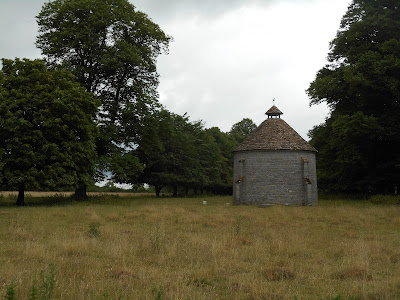The pumping station became disused with the transition to diesel power in the 1960s. There used to be additional railway lines much closer to it but I understand that these were removed in the 1980s. The Northern Inner Distributor Road now separates the pumping station from the railway. The road, which took four years to complete, finally opened to traffic in the summer of 2017.
As part of the redevelopment of the Firepool Lock area, there are plans to convert the pumping station into a café and restaurant. I'll believe it when I see it! It is a listed building, which has presumably saved it from demolition.
Update May 2020 - the pumping station is still derelict but it now has blocks of flats on either side of it. A new cycle and footpath has been built on the northern side of the Bridgwater and Taunton Canal, so it is now possible to get closer to the pumping station.
Firepool Pumping Station from the canal
Firepool Pumping House from the railway side
The wording which can still be seen on the side of the pumping house says "British Railways. Taunton Freight Concentration Depot." I'm not entirely sure what a freight concentration depot is but I presume today it would probably be described as "logistics". Taunton was designated a freight concentration depot in 1963 and remained one until 1972 when it was closed due to competition from road transport.
Pumping Station, May 2020
Pumping Station, May 2020


































